Warning: Undefined variable $k in /home/nginx/domains/wired2fishcom.bigscoots-staging.com/public/wp-content/themes/understrap-child-0.6.0/functions.php on line 984
Warning: Undefined variable $k in /home/nginx/domains/wired2fishcom.bigscoots-staging.com/public/wp-content/themes/understrap-child-0.6.0/functions.php on line 987
Bass fishing represents a way of life for some of us outdoorsmen and women. While for others it’s simply an escape from a hectic life. But the biggest thing all of us want to figure out is how to catch more and bigger bass.
For me it’s always been about learning so that I can consistently catch them whenever I go and wherever I go. And over four decades of chasing bass, I’ve found that a bass is pretty much same everywhere you go. So learning all about the bass species will make you a better angler. Knowing their habitat, diet, spawn cycles, growth cycles and more will put you in the right places at the right times.
Bass are impulsive, moody creatures that need to eat, spawn and grow. So understanding when they do things, where they do things and how you can intersect and tempt them is really all there is to it. So let’s quickly run through several things that will immediately help you catch more fish consistently.
Be sure to look for the red hyperlinks, as this guide will act as an encyclopedia to ramp up your bass fishing knowledge quickly.
Best Times to Fish For Bass
For most people, they fish when they can. And some will plan trips around the weather. But for the most part, people have to pick and choose when they can fish. Knowing that fish can be more active in certain windows immediately increases your catching odds. Let’s look at a few of these briefly and you can dig in deeper on the best times to fish.
Low light conditions can put the odds in your favor. So sunrise and sunset are great times to target bass if you only have a couple hours to spare. They have a distinctive feeding advantage when they are more concealed and can see better with the sunlight dimmed. So they are most active in the diminished light. That’s why you see a lot of bass feeding in schools and busting baitfish in the morning and just before dark.
For the same reasons, bass fishing at night also gets good in the warmer months.
Also bass fishing really picks up in the spring, so focusing your attention on spring bass fishing and early summer bass fishing will again increase your odds. A lot of records are broken in the early prespawn period when bass are feeding up before the spawn. They are feeding and getting more aggressive as the water warms.
Bass are most comfortable in 60-75 degree water, so the closest we are to that water temperature range, the more aggressive the fish will be. So lots of moving baits and big retrieves work well then. And the more aggressive they are, the faster you can fish.
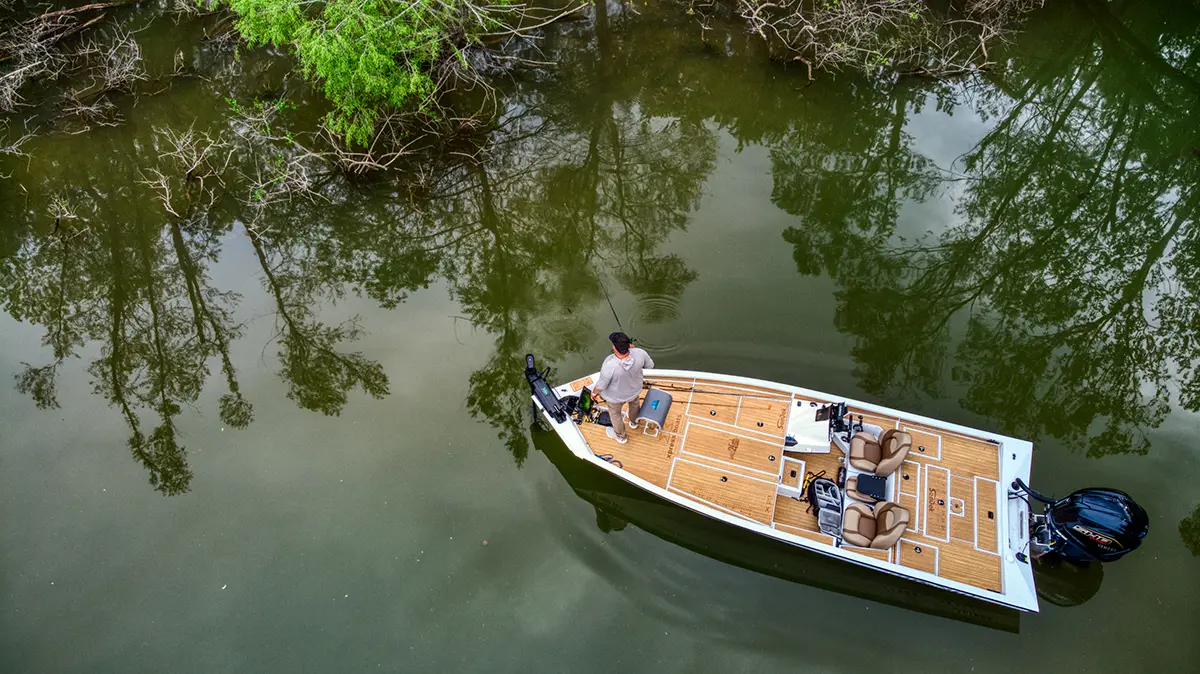
Where to Fish For Bass Near You
There are probably lots of opportunities nearby for bass fishing as largemouth bass are one of the most prevalent species in the country. Ponds, streams, rivers, natural lakes, man-made reservoirs all offer good bass fishing. If the body of water has lots of color, forage and good water clarity, then you have a recipe for great bass fishing.
Seek out cover
Bass relate to depth changes and cover. They use cover to conceal themselves as well as general feeding grounds, as cover often attracts forage like minnows, shad, crawfish and other small fish. So a lot of bass fishing revolves around cover like stumps, standing timber, laydowns, grass beds, lily pads, docks, rocks, structures like wing dams, rip rap walls, seawalls and more.
Current positions fish
If you are fishing a body of water, you can predict where bass will hide based on the current. On big river systems like the TVA, bass will relate to ends of ledges that face into the current in the post spawn and can gang up in big schools. In smaller current situations, anything that blocks or redirects the current can create eddies for bass to lie in wait for ambushing prey that washes by. So fishing current makes bass very predictable.
Put your bait in the hard to get to places
Generally speaking I’ve had a lot of success getting my lure in places where I think the majority of anglers will miss or are afraid of getting hung up. I skip lures under trees and docks a lot. I pitch things into the heart of gnarly looking cover and often times some of my biggest fish have come from this extra effort.
Bank fishing
A lot of good bass fishing can be had from the bank, but you need to follow the general guidelines of shallow in spring and fall and deep in summer and winter. If you can’t reach deep water in the winter or summer you likely won’t catch a lot of bass bank fishing. And vice versa if you want to catch bass shallow from the bank. You need to be there when they are.
One of the best days I had flipping was from the bank a few years ago. I broke off two giant bass and landed two over 7 pounds and 3 more between 4-5 pounds. It was because I took advantage of fishing flooded cover from the bank where I couldn’t get to my boat from the other side.
Look for pinch points
Look for pinch points especially if you fish from the bank. Some folks call it fishing funnels. Some guys call em “neck down” areas. It’s basically narrow or lead in areas that lead into and out of spawning areas. So basically where are the fish headed or leaving. And when you figure out where bass want to spawn which is usually in isolated protected shallow pockets and flats, then you can work back and find those funnel areas that are easier to fish. Look for areas like bridges leading back into spawning bays. Look for canals, channels leading back into bays, and channel swings that run close to spawn flats.
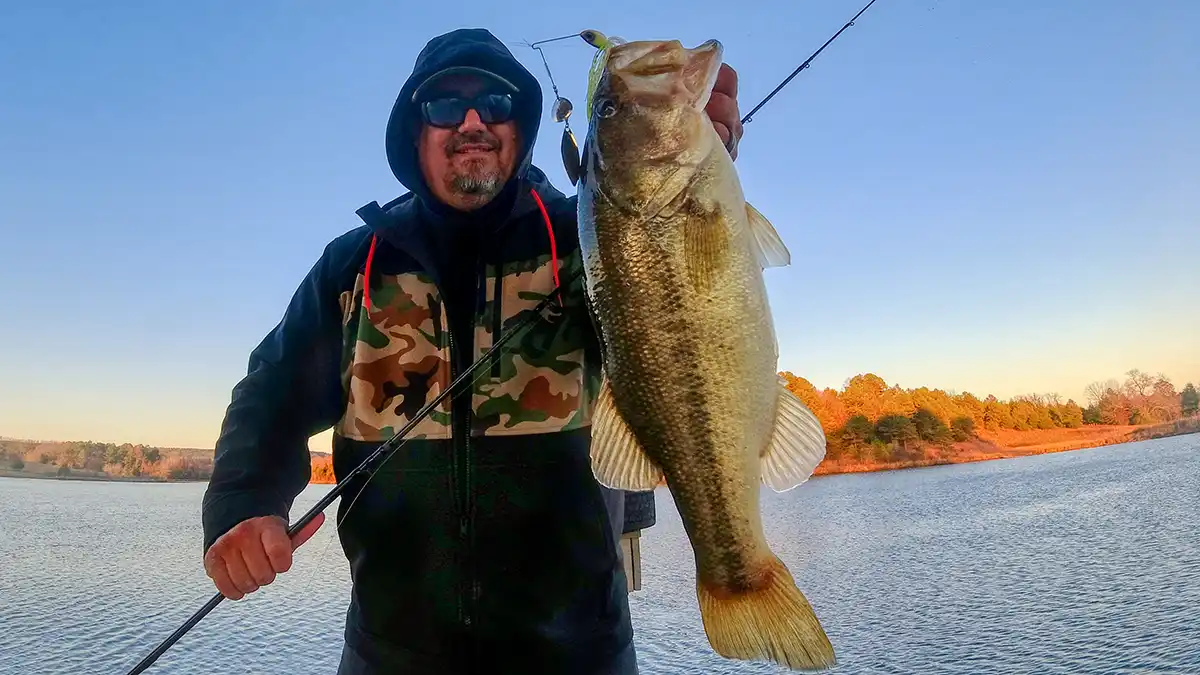
Best Bass Fishing Techniques
There are too many techniques to cover briefly in one article. But we will list a few as well as some references to more in-depth discussions on the topics.
Spinnerbaits around wood cover
One of the easiest lures to learn to fish for bass are spinnerbaits. You basically tie one on and then you just cast it out and reel it in. If you are in shallow water, you use lighter spinnerbaits and fish a little faster. And if you’re in deeper water you use heavier spinnerbaits and can slow roll them to catch bass not as active.
But around wood cover a spinnerbait is pretty snag less and if the water has good color or even muddy, a spinnerbait gives the bass a vibration to hone in on when visibility is diminished. In the spring a Colorado blade spinnerbait around shallow wood is a great way to catch big bass. Look for cover, water color and move fast from piece to piece.
Frogs over matted vegetation
In the warmer months, when grass tops out, a frog effectively tempts bass out of cover. Never mind, it’s one of the funnest bites in bass fishing. So get a strong rod, braided line and your favorite hollow bodied frog. And then just work it with short chops of your rod tip to make the frog splash on top of the mats and draw the bass up. Best tip is to wait a second on the bite before swinging so hard you try to break the rod.
Ned Rigs and Shaky Heads in clear water
When you’re just fishing down the bank and there is not a lot of visible cover. There is still stuff under the water. But if the water is pretty clear bass can be spooky. With a light Ned Rig or shaky head you can put a small plastic worm on a jighead and make long casts and slowly crawl, hop and shake your worm and attract bass. Shaky heads and ned rigs get lots of bites from all sizes of fish.
Drop Shot Worms on deep clear fisheries
When fish get pressured or when they have been caught on a lot of power presentations and are skeptical, a drop shot can put a lot of fish in the boat. The key is to not move it all that much. Slow drag it until you get it up next to a boulder or stump and then work it around the cover. And then drag it along. You can also catch suspended fish by just dropping it down to them and trying to hold it perfectly still.
Fishing Texas Rigged Plastics in cover
If you want to catch a lot of bass, you should learn to Texas rig plastic worms. And then just fish them in everything. Grass, wood, docks, literally a plastic worm can work anywhere. Just cast the worm out and then with your rod, pick it up and let it fall. Take up your slack and then pick it up again and let it fall. In Winter they become a little less as effective, but jigs and craw trailers become more effective and catch the same fish.
Tie Good Knots
One of the biggest keys to bass fishing is being able to switch lures and tying good knots. Cut your lure off and try the next one but always tie a good knot and if you have caught a few fish or fished it through rough cover, check your line and re-tie another good knot. To learn all the good knots, read our best fishing knots guide.
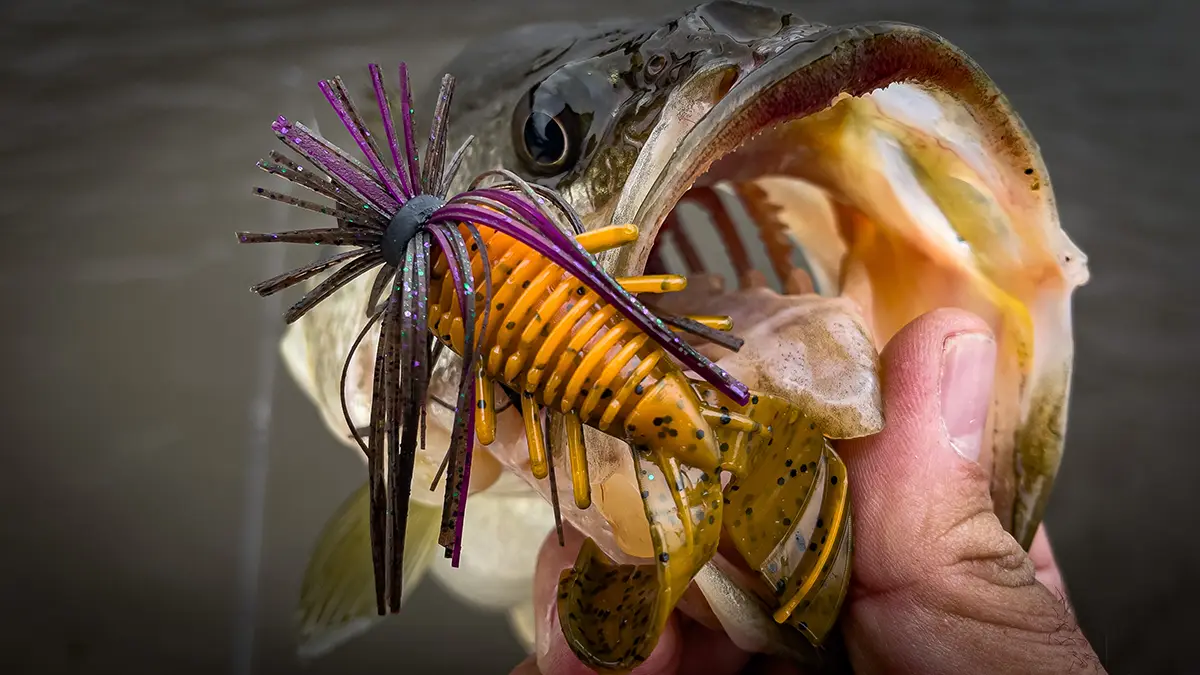
Bass Fishing Lures
Really a handful of lures will cover 99% of the things you will encounter in most bass fishing locales. So knowing a little about the best bass lures will take you a long way. Here is a quick rundown of the best baits and our lure guide will give you more in depth info on each lure.
Texas Rigged Plastics. Learn to Texas rig your plastics. It makes the worm or craw or other plastic snag less and that means you can literally throw it anywhere and fish it anywhere. So learn some of the staples like ribbon tail worms, craws, brush hogs, beavers, and more.
Spinnerbaits. A spinnerbait works shallow and deep. In cover or open water. And, it’s very easy to fish. So, if you can learn which are the best spinnerbaits and what blades to use on spinnerbaits when, you will catch a lot of bass all year long.
Topwaters. Maybe the most fun way to catch bass, because it’s so visual, topwater lures catch bass when a lot of other presentations won’t work because it works on both the feeding impulse and the aggravation impulse. I have had 25 pound limits on Whopper Ploppers, giant limits on clear water lakes on frogs, big limits on walking topwaters, lots of big bass in the spring on poppers, and tons of bass on buzz baits. Knowing about each of the different topwaters will help you catch a lot of fish others miss.
Crankbaits. Crankbaits range in size and depth. You have shallow runners and wakers. You have mid depth and lipless crankbaits. And you have flat side crankbaits and deep diving crankbaits to get to fish deep in the prespawn and post spawn periods. A square bill is great around wood cover and rock. A mid-depth crankbait is good in colder water and clearer water and a deep diver is great anytime bass gang up in schools offshore.
Jerkbaits. Jerkbaits used to only be a winter time lure, but their versatility has been proven in all seasons in recents years with advent of live imaging. Now anglers are realizing jerkbaits can cover a lot of depth zones, draw fish from distances and be worked really slow in the winter and really fast in the warm months to get reaction bites. Jerkbaits are simple to fish with a long cast and then jerking the bait with the rod tip and then waiting a few seconds and jerking it again. How long you pause is really all you have to change to work it shallower or deeper in colder or warmer weather.
Swimbaits. These have become some of the most versatile lures for bass fishing in the last 10 years because there are so many effective sizes shapes and applications for swimbaits. Swimbaits like the Keitech Swing Impact FAT out deep on small ball heads works great for suspended fish. The oversized swimbaits work great for attracting trophy bass all over the country now. And anglers can literally find a size, color and style of swimbait that perfectly fits the conditions on just about any lake. And most of the time you just cast them out and reel them in slowly to get all your bites.
Jigs. A jig and craw trailer gives anglers a powerful weapon to catch bass. It works in all seasons, on just about all fisheries. You can fish them in 0 feet of water to 100 feet of water. They come through cover well and get a ton of bites fished in a variety of ways. Guys will swim swim jigs through shallow cover, stroke jigs on ledges offshore, drag football jigs on structure, or pitch flipping jigs into shallow cover to catch fish.
Chatterbaits. The Chatterbait came on the scene in the 2000s and is simply a skirted jig with a blade that causes the jig to vibrate when you straight reel it. It has become one of the most consistent fish catchers all over the country in muddy water and clear water alike. If you’re new to bass fishing a Chatterbait is just as good a place to start as a plastic worm.
Other Bass Fishing Gear
Fishing Rods. A good bass rod, a good reel and quality fishing line are all worth their weight in gold to bass anglers. While you can catch bass on just about any rod out there, a good rod will make casting and fishing some lures easier and more effective than others. And a good rod will last you a decade or more. So you’re investing in your longterm fishing when you buy a little bit better rod. More sensitivity comes with better materials. More power can be built into a rod and the right action and taper can make all the difference in making fishing really easy or a real chore. We’ve reviewed a lot of quality fishing rods for you.
Fishing Reels. Just like a good rod, a good reel will make casting easier and give you a lot more distance and will also help you on the fight of fish with a good drag to keep you from breaking off a big fish. Knowing your gear ratios, and understanding how to cast a baitcaster will open up a lot more avenues in your fishing. Likewise choosing the best spinning reel you can afford will give you a lot of good years of fishing with little to no maintenance.
Fishing Line. Good line will alleviate a lot of problems like knots, bird nests and breakage on hooksets and landing fish. And the right line will make certain applications easier to fish like braided line with frogs in heavy vegetation or finesse fluorocarbon on a drop shot to be ultra stealthy in clear water like when chasing big smallmouths up north.
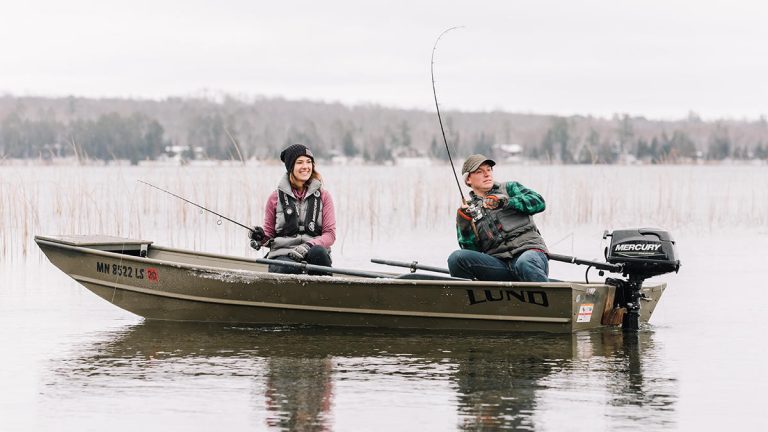
Bass Fishing Boats
To reach more water and opportunities, a boat of some fashion helps tremendously. There is an old adage that at any given time 90% of the fish are in 10% of the water. That’s a nice way of saying you better be mobile if you want to catch bass consistently. They move throughout the year and to get to them at some points in the year, a boat makes it way easier.
Bass boats for fishing have evolved over the years. From Jon boats, aluminum bass boats, fiberglass bass boats and now fishing kayaks, there are a lot of options to fit a lot of different budgets for bass anglers.
Jon Boats
I started in the 70s fishing out a small Jon boat with my father, and still enjoy fishing out of a Jon boat on some smaller lakes I fish. I like the simplicity of a Jon boat. While I don’t want to take on in big rough waters like Kentucky Lake in a 20 mph wind, it is awesome for smaller bodies of water and calmer days. And they absolutely excel for fishing small rivers where you often beach the boat when loading and unloading in random places.
The world record bass was caught not once but twice out of Jon boats. You can get Jon boats with tiller motors on the back or wired up to a steering column at the console. They come in a ton of sizes and options now from a bunch of good makers. So finding a Jon boat that fits where and how you fish is possible on a decent budget.
Bass Boats
Both aluminum and fiberglass bass boats have scaled up to major purchases now and they are massive investments to get you on the water. But they provide maximum safety and stability as well as options for maximum convenience, speed, distance and ability to handle rough waters safely and easily.
Building boats that withstand the constant jarring and beating of waves and wind is no small feat. Then putting huge motors on the back, the platforms have to be built up to significant standards to do all of that. But you can cover the most water in the least amount of time in these bigger bass boats. And you can equip them with the latest in electronics to narrow your search for bass on massive bodies of water.
Kayaks and Canoes
Kayak fishing has exploded in recent years thanks to the number of great kayak makers out there building fishing kayaks for every budget. It’s made covering water a lot more manageable on a smaller budget for anglers. Once you have the kayak you need a kayak paddle, a way to store kayaks and life jackets. And then you’re ready to load up with tackle.
Today’s kayaks are stable, offer ample storage opportunities, get you into waters other boats can’t and open up a new world of fishing opportunities for kayak anglers. And they can put you on a lot more bass for a relatively small investment.
Same can be said for canoes where you and your fishing partner can leisurely paddle around to good fishing holes or ride the rapids to the next good fishing location. We have a tremendous kayak fishing archive to keep you well informed on kayak fishing ideas and applications.
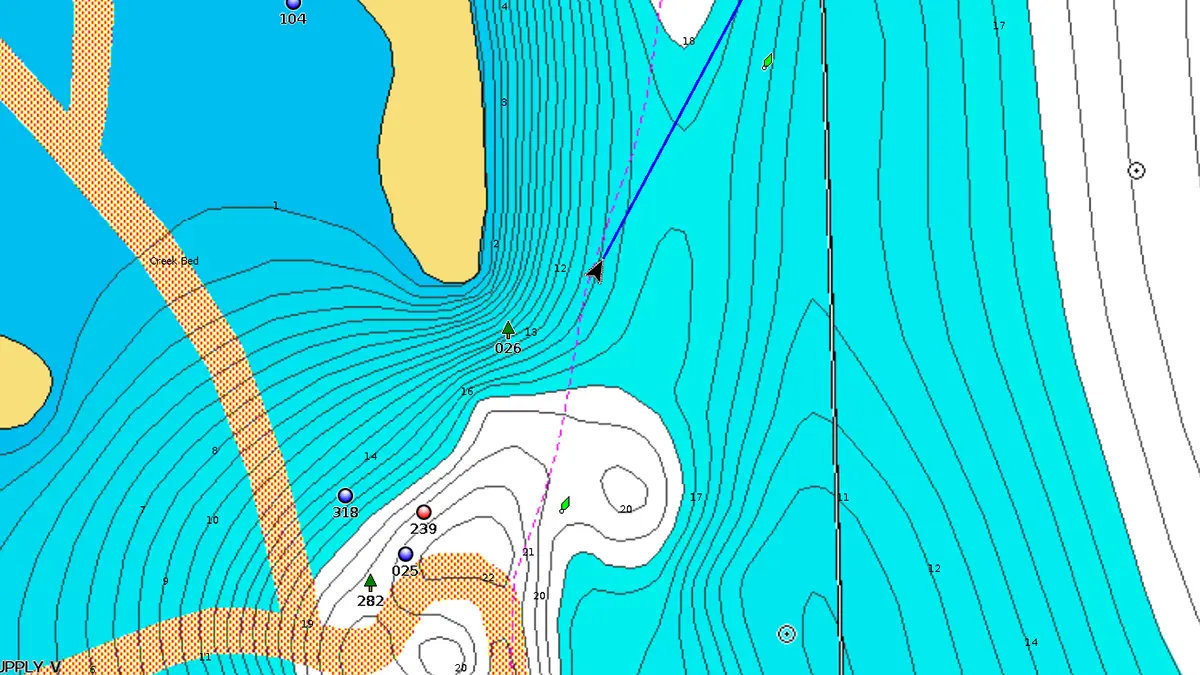
How to Find Bass
The biggest thing that separates great fishermen from average fishermen is their ability to find the fish. In bass fishing it’s about understanding where the bass are in their cycles and then maximizing your opportunities to entice them to bite. It’s all about knowing where they were and where they are headed and intersecting with the bass on a consistent basis.
Find the bait
One of the single biggest keys to catching bass if finding the bait. That might be minnows or shad. That might be crawfish. That might be baby bluegills. We’ve even seen times when it was black birds in the reeds. Finding bait means there is something to keep a bass in that area.
Know the seasonal cycles
The cycles for a bass revolve around seasons, moon phases, and forage movements. We all know bass spawn in the spring when the water gets above 65 degrees. So they will move shallower out of their deep haunts to find shallow protected areas to spawn. So finding their routes from deep water and then fishing back and forward until you intersect them is a good tactic to catching bass in the spring.
Same in the summer. When they leave the spawning areas, they will hold on mid depth cover for a short period guarding fry and recouping from the spawn before going out to some of the deepest water they can find to start ganging up and feeding again to put their weight back on. Then in the fall they will come back shallow to gorge on bait ganging up on shallow cover before heading back to the deep for the winter.
In a nutshell that explains spring bass fishing, summer bass fishing, fall bass fishing and winter bass fishing.
Find the transitions
Look for banks where the rock changes from one smaller type of rock and then turns more into boulders and ledge rock. Those transitions indicate quick changes in water depth that bass can exploit and run up to feed shallow and then move quickly back out say when a cold front hits. These transition areas always seem to hold some fish and at times are the only places you will find fish. So learn to read and fish transitions.











